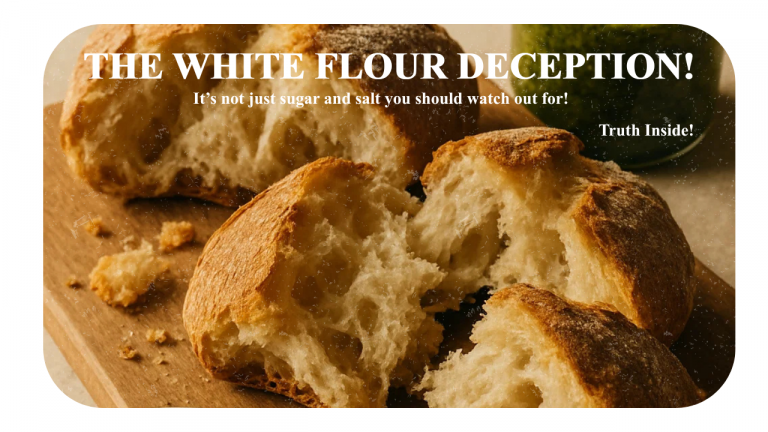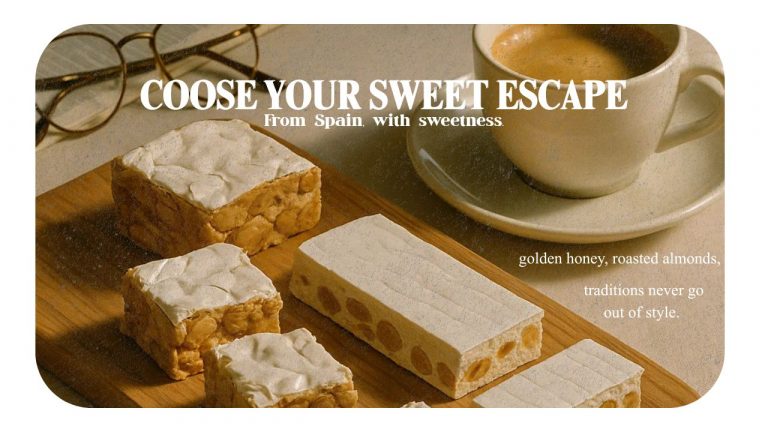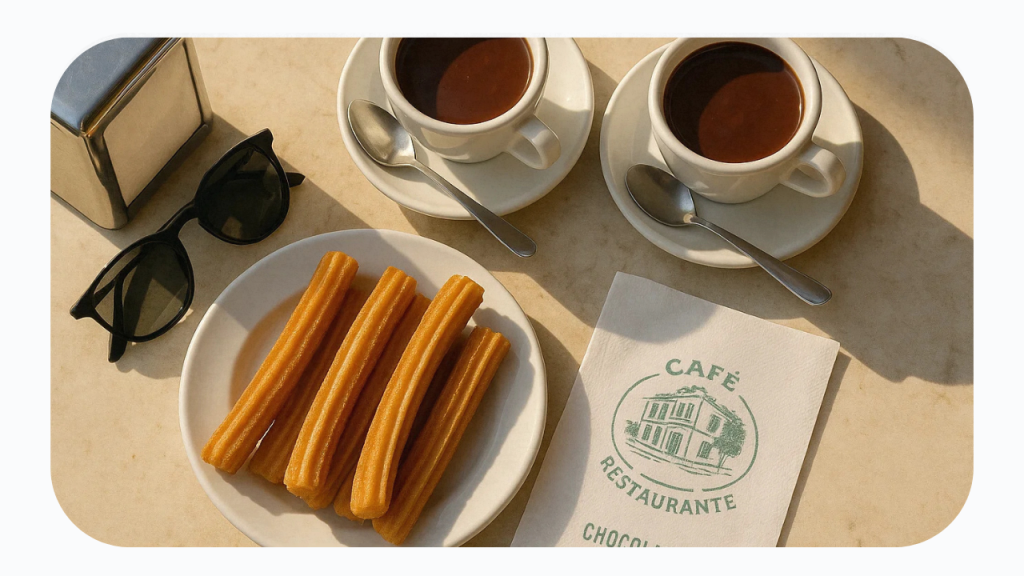
In Spain, churros aren’t just food – they are a ritual, best enjoyed in the morning. They are also a popular treat at fairs, festivals, and late at night.
Churros are the kings of street food in Spain, and there’s something deeply satisfying about catching the smell of fried dough and chocolate as you start your day. Walking through the plazas and watching people enjoy their slow morning with churros to share, chocolate, and coffee, can make you envious; that is not your everyday experience.
Sure, having churros for breakfast every day is probably not doctor-approved, but it’s nice to romanticize.
Churros shine brightest in their classic form. Some whole-wheat or air-fried versions can come close, but nothing beats the original. I got curious about making them at home, but honestly, sitting in a Spanish plaza and sharing churros is an elite experience. Still, you can create a little Spanish morning right in the comfort of your home. I will share the ultimate churros recipe you can enjoy today, but first, I wanted to dive a little into the culture and history behind this Spanish delicacy.
What are Churros?
Churros are deep-fried shapes of dough, typicaly served with hot chocolate on the side. They have a fluffy and tender interior with a satisfying, crunchy exterior.
In Spain, churros are typicaly in two styles: the thin, sometimes looped version, and the thicker, longer ones known as porras. Traditional churros are crisp and slender, while porras are bigger, fluffier, and softer, perfect for sipping into hot chocolate.
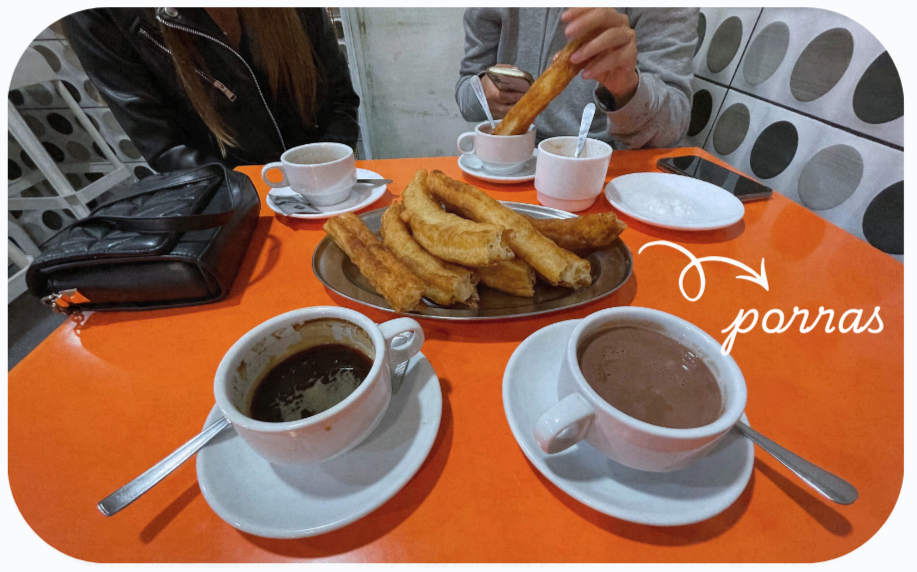
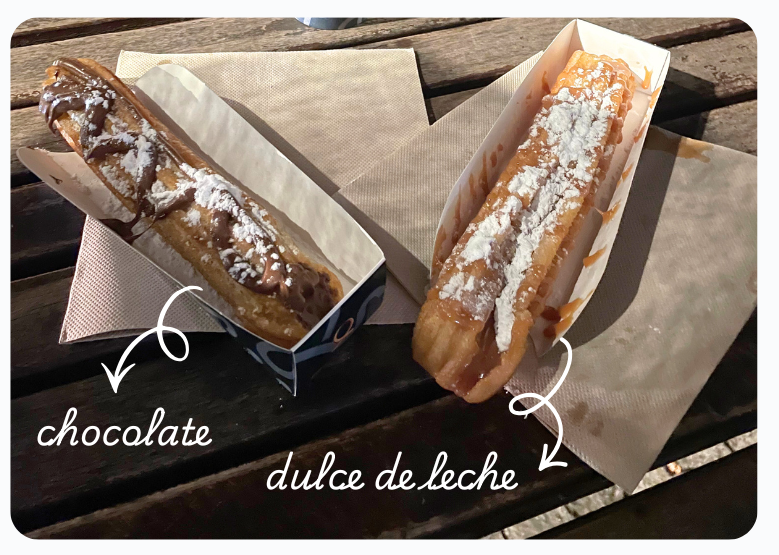
Today, churros have evolved into various sizes and flavours. You can even find them stuffed with chocolate, dulce de leche, and other sweet spreads.
The History of Churros
Churros seem like a simple Spanish treat, but they have several commonly accepted stories about their history.
1. The Most Popular Theory: Spanish Shepherds
Long before churros were dipped into chocolate or coffee on every Spanish corner, in medieval times, they were a simple snack made by shepherds in the mountains. With no access to fresh bread, they fried dough over open fires.
The shape? Inspired by the horns of the churra sheep. Yes – churros can basically be sheep-horn-shaped mountain snacks.
2. Another Theory: A Chinese Inspiration
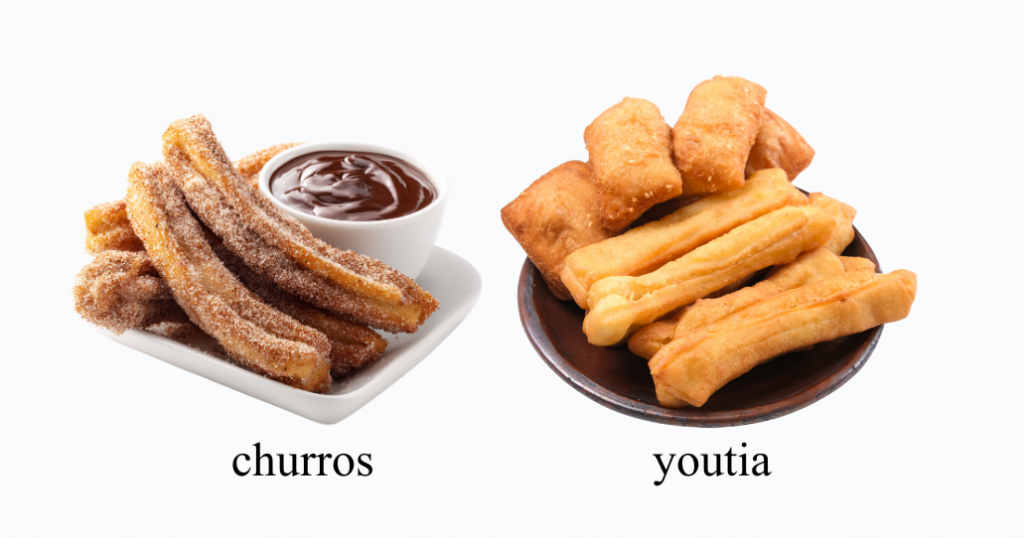
Some historians think that Portuguese traders in the 16th century brought back a Chinese friend dough called youtia – a long, deep-fried dough stick eaten in China for centuries, usually with congee (rice porridge) or soy milk for breakfast. Spain adapted the recipe, gave it a new shape, made it sweeter, and the churro was born. Leave it to Spain to take something salty and turn it into a dessert.
3. Churros + Chocolate = The Power Couple
Hot chocolate with churros became a thing in the 16th-17th century, when chocolate arrived in Spain from the Americas. Spaniards made drinking chocolate thicker, richer, and silkier – the perfect dipping partner. This compo became a classic for Sunday breakfasts, winter nights, and post-party early mornings.
4. The Churro Goes Global
Spanish and Portuguese explorers introduced churros across Latin America, where each country developed its own twist.
- Mexico adds cinnamon-sugar; they tend to be shorter and thicker, and often filled.
- Argentinian are usually thinner and longer, stuffed with dulce de leche and sometimes dusted with powdered sugar.
- Brazilian churros are also filled with sweet ingredients like caramel, chocolate, or fruit jams and topped with sugar or sprinkles.
Latin American variations incorporate local ingredients like dulce de leche and fruit jams, which influence their flavours.
Where to Find the Best Churros?
While homemade churros are a sweet win, nothing beats sitting in a bustling café, watching locals enjoy their morning ritual with thick hot chocolate and perfectly crispy churros.
If you ever find yourself in Madrid, Churreria San Ginés is legendary for serving the best churros in the world. They’ve been following the same recipe for over 100 years! It’s the most popular spot to have churros — a place where locals and visitors gather. The inviting atmosphere and friendly staff make it hard not to stop and try this classic Spanish moment for yourself.
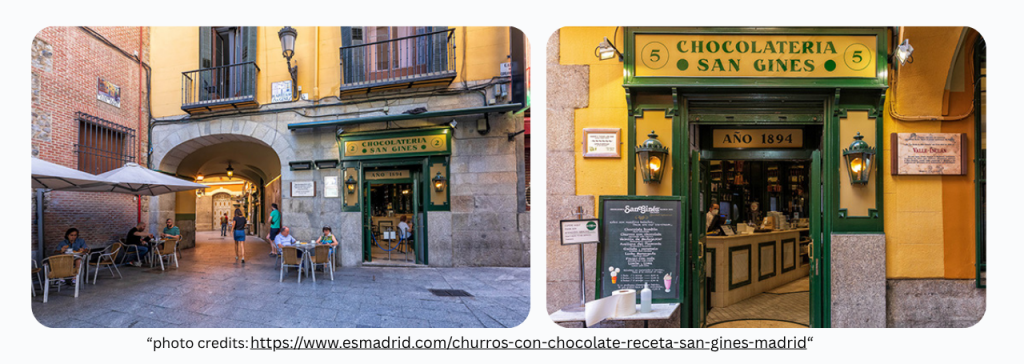
And if a trip to Madrid isn’t in the cards, don’t worry – you can bring a bit of this sweet Spanish ritual into your own kitchen.
How to make it at home?
Churros may seem complicated to make, but they are very simple and straightforward. Even so, you might encounter some obstacles that you will need to avoid. There are many recipes available; with slight changes and adaptations, you can create your own churros dough.
➥Churros require the following ingredients:
- 240 ml water,
- 28g butter,
- 13g sugar,
- 1 teaspoon salt,
- 120g flour,
- 1 large egg (about 50g),
- 1 teaspoon vanilla (optional).
➥For the coating mix (optional):
- 100g of sugar
- tbs of cinnamon
➥For frying:
- oil (enough to fully cover the churros as they fry)
The process:
🔥 Over medium heat, add the water, butter, sugar, and salt to a pot and bring everything to a boil.
🌾 Once it reaches a boil, turn off the heat and add the flour, stirring immediately until the mixture comes together. When the dough is smooth and starts pulling away from the sides of the pot, it’s ready.
🥚 Let it cool for about 5 minutes. Then add the egg and vanilla and mix well. The dough will look like it’s splitting at first, but don’t worry, just keep mixing. It will come together into a smooth dough that once again pulls away from both the pot and your spatula.
🍵 Heat the oil over medium heat. It’s essential not to let it go too hot; otherwise, the churros will brown on the outside but remain raw inside. You can test if the oil is ready when a small bit of dough creates a gentle sizzle as soon as it touches the surface.
👩🏻🍳 Transfer your churro dough into a piping bag fitted with a star-shaped nozzle to get that classic churro texture. You can pipe the dough directly over the pot and use scissors to cut it into sticks as it drops into the oil, or pipe the shapes onto parchment paper first and then gently place them into the oil.
💫 Turn the churros halfway – about 3-4 min on each side – until they turn golden brown. Use tongs to lift them out of the oil and place them on a plate lined with paper towels to drain the excess oil.
🤎 Mix sugar and cinnamon, then roll the warm churros in the mixture to give them that perfect classic coating.
Enjoy with some hot chocolate on the side or a nice cup of coffee! ☕🤎
What if I don’t have a piping bag?
Even tho classic churros have that signature ridged texture, you don’t need a piping bag or a star-shaped nozzle to create good churros!
- Shape with your hands: divide the dough into small pieces and roll each into a churro-style stick.
- Use a makeshift piping bag: fill a plastic bag with the dough and cut a small hole in one corner to squeeze it out.
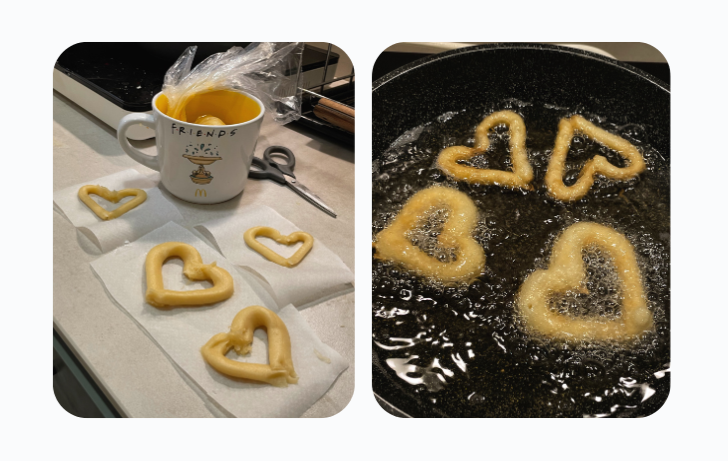
Whether you pipe them, shape them by hand, or improvise with a bag, the best part is dipping those golden sticks into chocolate and savoring a little taste of Spain. And might as well have fun with it and create little shapes.
The first time I was making them, the dough turned out a little too sticky. That almost always happens when there is too much liquid. In my case, I was using too many eggs at the time.
Mistakes to avoid while making churros:
➥Using too many eggs:
- Each recipe usually calls for 1–2 eggs.
- Adding too many makes the dough too soft and sticky, so it won’t hold its shape when piping.
➥Not cooking the flour mixture enough:
- After boiling water, butter, and salt, you add flour and stir.
- If it’s not cooked into a smooth, cohesive ball, the dough will be wet and sticky.
➥Adding eggs to hot dough:
- Hot dough can scramble the eggs slightly, making it runny instead of forming a firm dough.
- Always let the dough cool slightly before adding eggs.
➥The dough is too warm when piping:
- Warm dough can ooze and lose shape.
- Ideally, it should be thick but still soft enough to pipe.
➥Not enough flour or wrong flour:
- Using low-protein flour or too little flour can make the dough too loose.
- Churros need all-purpose flour for structure.
➥Frying mistakes:
- Oil too hot → churros brown outside but stay raw inside.
- Oil too cold → churros absorb too much oil and get soggy.
- Maintain around 175–180°C (350–355°F).
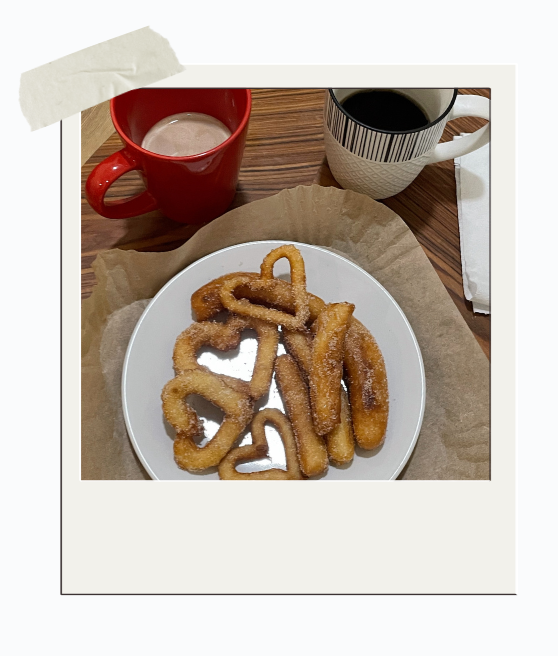
Making churros at home can feel intimidating at first, but the magic is in the process. Even if your first batch isn’t perfect, each attempt brings you closer to that golden, crispy perfection.
📝 Today’s note: Making churros at home can feel intimidating at first, but the magic is in the process. Even if your first batch isn’t perfect, each attempt brings you closer to that golden, crispy, cinnamon-sugar perfection. More than a recipe, churros are a little ritual of joy—a treat to share, savor, and celebrate the simple pleasures in life. They are proof that fried dough + sugar + chocolate = 100% happiness guaranteed. Even if you mess up, it’s still delicious.

